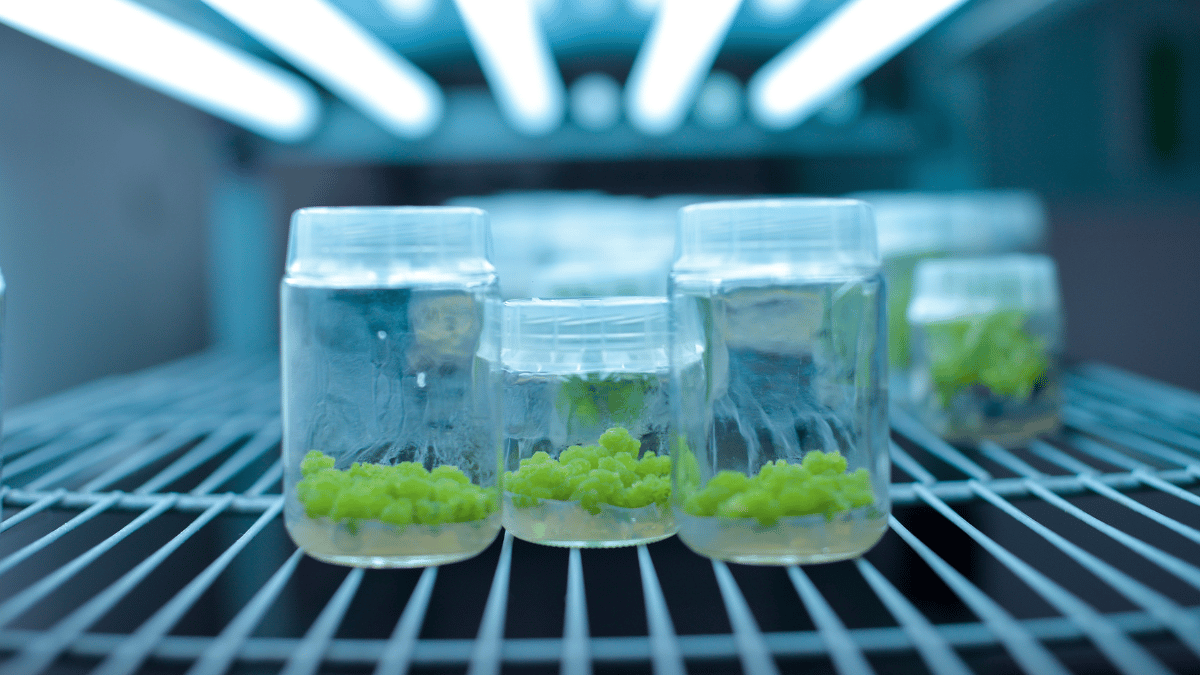
Advantages of Tissue Culture and Sugarcane


Sugarcane is an important crop in the tropical and subtropical regions and is popularly grown because of sugar, ethanol and other sub products. The main challenge faced by sugarcane growers is to obtain higher productivity. Due to sugarcane's tendency to viral and pests attacks, productive growing is more deceivingly difficult.
The conventional means to propagate sugarcane is by stem cutting. The nodal sections of the stem contain 2-3 nodes used as planting materials in the fields. The main challenge associated with this technique is obtaining rapid, disease-free, and large-scale sugarcanes that can fulfill industrial demand. The best alternative to tackle this problem comes in the utilization of tissue culture.
This article analyzes sugarcanes and the procedure of their propagation in tissue culture.
Shop our Plant Preservative Products Today!
Sugarcane Information
Sugarcanes are tropical, perennial grasses belonging to the family of Poaceae. Sugarcane is scientifically known as Saccharum officinarum and primarily popular for the production of sucrose. Sugarcane stalks are 3-5 meters in height and about 2 centimeters in diameter. It grows in multiple numbers from the single base stalk and the tillering stems then grow and divide into nodes and internodes.
Sugarcane leaves are tubular and blade-like structures that grow in two rows from the nodes of the stem. The leaves cover the stem completely and are thicker in the center compared to margins The inflorescence of the sugarcane is a terminal panicle (branched or compound flowering). Two spikelets are present in the panicles protected by husks or silky hairs along with seeds. The flowers produced in the inflorescence possess two different sexualities, one that's sterile and one that's bisexual.
Sugarcane Propagation in Tissue Culture
The conventional techniques used to propagate sugarcane allow season availability of the planting materials. Also, the technique is prone to several diseases including gumming disease, Fiji disease, scald, etc. The best result is obtained by introducing the plant via tissue culture, improving productivity, reducing production time, and producing disease-free plants. Steps of somatic embryogenesis of sugarcane are explained in the brief from the study of “Widuri, Laily & Dewanti, Parawita & Sugiharto, Bambang. (2016). A Simple Protocol For Somatic Embryogenesis Induction Of In Vitro Sugarcane ( Saccharum officinarum. L) by 2,4-D And BAP.”
Somatic embryogenesis is the formation of embryos by using somatic cells (cells other than germ cells). The stages involved in somatic embryogenesis include pro embryo mass formation, somatic embryo formation, maturation, and regeneration. In this method, embryos develop via two pathways direct and indirect somatic embryogenesis.
In indirect pathways, the somatic embryo develops without an intermediate stage of callus formation. However, in the indirect pathway, the embryos develop via the formation of callus as an intermediate step.
Materials required
Sugarcane in vitro plantlets one-month-old cut from 0.5 cm above the base stem, Murashige and Skoog media, 2,4 - Dichlorophenoxyacetic acid ( 2,4-D ), casein hydrolyzate as an organic material, the amino acid proline, 3% sucrose, and phytagel 0.25 %.
Procedure
The procedure involves three steps: callus induction, callus proliferation, and regeneration of somatic embryo.
Callus Induction
- Take the explant from the basal segment of the sugarcane cultivar.
- Surfaces sterilize the explants.
- Then, culture the explants in culture bottles containing MS media, supplemented with plant growth regulators, 3 mg/L 2,4 - Dichlorophenoxyacetic acid ( 2,4-D ).
- The explants will start swelling in 2-4 days and the callus formation will be induced that can be observed in two weeks.
Callus Proliferation
- Take the developed embryogenic callus from the callus induction medium and cut it into smaller sections.
- Transfer the cut pieces to a callus proliferation medium containing 2,4-D 1.5 mgL-1 + prolin 560 mgL-1+ casein hidrolisat 300 mgL-1.
- In this step, the developmental stages of somatic embryogenesis will be induced.
- Place the cultures in dark conditions at a temperature of 23℃ - 25℃ for 4 weeks to induce callus formation.
Regeneration of Somatic Embryo
- After four weeks when you see the developed shoot system, it's ready to be transferred to the regeneration media.
- The regeneration medium contains simple MS media without any growth regulators.
- Transfer the callus with a developed shoot system to regeneration media to promote the development of the whole plant.
- Transfer the cultures in light condition at temperature 23℃ - 25℃ to induce proper development.
- After a few weeks, small leaflets can be observed in the cultures.
References
- Widuri, Laily & Dewanti, Parawita & Sugiharto, Bambang. (2016). A SIMPLE PROTOCOL FOR SOMATIC EMBRYOGENESIS INDUCTION OF IN VITRO SUGARCANE ( Saccharum officinarum. L) BY 2,4-D AND BAP. BIOVALENTIA: Biological Research Journal. 2. 10.24233/BIOV.2.1.2016.32.
- Abrar, Temam & Albejo, Alemayehu. (2017). Sugarcane (Saccharum Officinarum L) Tissue Culture In Ethiopia: Opportunities For Ethiopia's Sugar Industries. International Journal of Scientific & Technology Research. 6. 398-406.
- https://plantvillage.psu.edu/topics/sugarcane/infos
- https://en.wikipedia.org/wiki/Sugarcane
Blog Categories
View by Level
Popular Blogs

Callus Culture: Definition and Applications
Introduction Tissue culture is not just one technique! Yes, you heard right! As you know, tissue culture is an advanced...
Read More
6 Plant Tissue Culture Books to Keep Learning
Introduction Most of us are fans of books when it comes to learning a topic in detail and in a...
Read MoreSubscribe to Our Newsletter








Join the conversation
Your email address will not be published. Required fields are marked